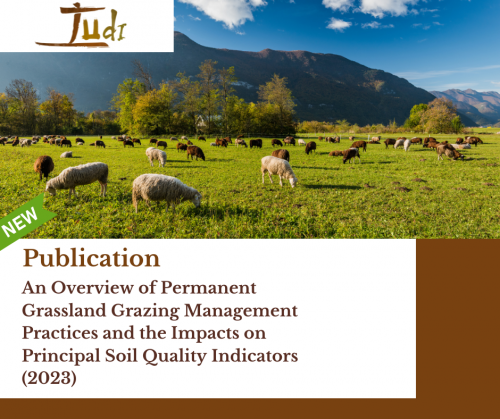TUdi article: An Overview of Permanent Grassland Grazing Management Practices and the Impacts on Principal Soil Quality Indicators
Published in the Journal of Agronomy in 2023, available in the TUdi library, and written by Filippo Milazzo, Richard M. Francksen, Mohamed Abdalla, Simone Ravetto Enri, Laura Zavattaro, Marco Pittarello, Stanislav Hejduk, Paul Newell-Price, René L. M. Schils, Pete Smith and Tom Vanwalleghem, you can find the article “An Overview of Permanent Grassland Grazing Management Practices and the Impacts on Principal Soil Quality Indicators”.
Grasslands, which are vital ecosystems supporting biodiversity, soil health, and carbon storage, are increasingly threatened. They are at risk of degradation due to unsustainable management practices and the growing impacts of climate change.
The article reviews the principal soil quality indicators (SQIs) to evaluate the sustainability of different grassland management practices globally. It explores why it’s important to evaluate these indicators to ensure sustainable land management and focuses on the specific set of soil quality data, known as the Soil Quality Minimum Dataset (MDS), that is particularly relevant to grasslands. Essentially, the review aims to highlight the tools and methods used to measure soil health in grasslands and their role in promoting sustainable practices.
In consequence, the article reviews two potential solutions: adopting grazing management and the development and adoption of novel grassland species. The former involves implementing sustainable grazing management plans (GMPs), which can help maintain or improve the health of grasslands by controlling grazing patterns and ensuring they do not harm the ecosystem. The latter focuses on introducing new types of grass species that could improve the land’s ability to resist drought, enhance water infiltration, and reduce issues like soil erosion and flooding.
Sustainable grassland soil management helps maintain the health of the soil, which in turn supports the delivery of vital ecosystem services, such as carbon sequestration, water filtration, and biodiversity. By using practices that preserve soil quality and prevent degradation, these management strategies enhance the resilience of grasslands, allowing them to better withstand and recover from human-induced changes, such as climate change, land use alterations, and overgrazing.
